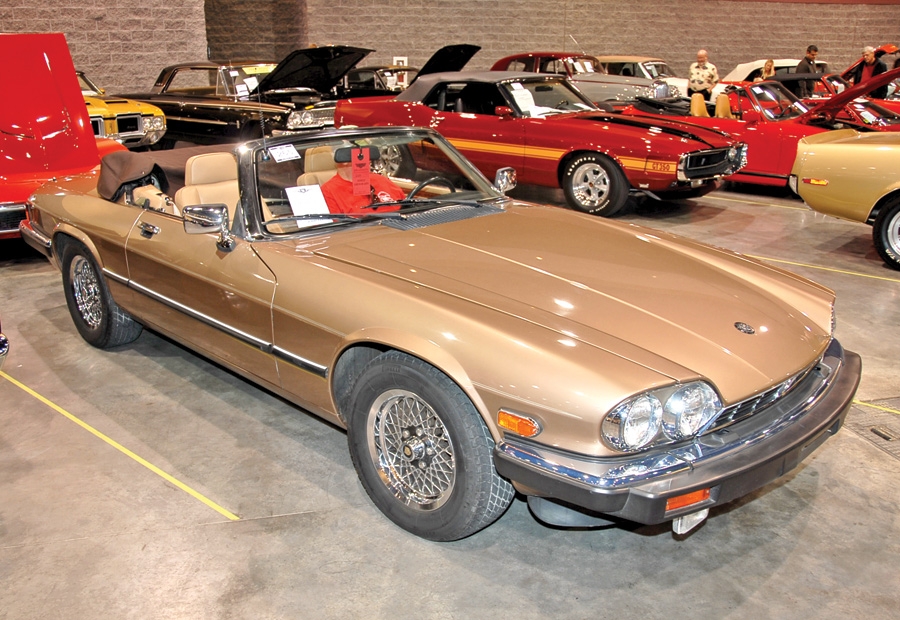
While it is common today to think that the introduction of Jaguar’s new “sporting” model in 1975 was greeted with jeers, the truth is rather different.
Certainly the XJ-S (the name carried a hyphen until 1991, when it became the XJS) was a notable departure from the XKE. The nomenclature clearly indicated that it was the top of the XJ sedan line rather than the latest in a line of XK sports cars.
Nevertheless, the XJ-S was very much the successor to the XK 150 FHC, a comfortable grand touring coupe that could even be had with an automatic transmission.
Following the same pattern, the XKE’s final iterations were also more cruiser than bruiser, and it can be successfully argued that the 1975 XJ-S fulfilled its brief rather better than the XKE 2+2 coupe, which always seemed the most un-cat-like of Jaguars.
A touch of Ford
The new XJ-S was a thoroughly modern shape, the first designed without the direct input of founder Sir William Lyons. That the styling was right became proven in a remarkable 21-year production run. With only minor massaging, the XJS looked as good in the Clinton Administration as it did under President Ford, and an astonishing 115,000 coupes and cabriolets of several types were built.
Speaking of Ford, FoMoCo had a large role in not only saving Jaguar Cars during this period, but it was also directly responsible for the development that made it possible to end the old necessity of “buying two new Jaguars at once, so one could be driven while the other’s in the shop.”
Although the car was launched in some of the darkest days of British Leyland U.K., Ltd, it must be said that the work force at Brown’s Lane for the most part did the best to imitate the French Resistance and work against the worst of management to build the cars the best they could.
Speed, looks and luxury
With the XJ-S, the enthusiast has a wide range of choices, and each has a very specific appeal. The early V12 cars have a very 1970s period feel, with lots of pebbled black vinyl and brushed aluminum bright trim, and of course, those great drum-style instruments. There is nothing like the sound and response of the 5343-cc engine, and when you consider what was happening elsewhere in the automotive world in the mid-1970s, a 244-hp V12 seems, and is, incredibly exotic.
The XJ-S could reach 143 mph, and it had a 7.6-second 0–60 mph time, while cosseting you in a superbly formed Connolly leather bucket seat. At the same time, you enjoyed the tunes from the standard 8-track stereo as the suspension soaked up the road bumps. However, that performance came with frightening fuel consumption, and in a bold move, rather than canceling the car or dropping the engine, Jaguar instead produced a new HE, or High Efficiency, version in 1981. Amazingly, alongside better mileage came increased horsepower.
The period appeal of the early cars does come without the uprated transmissions and improved brakes of the 1991–96 run. If you want a factory-built full convertible, you’ll have to go to 1989 and later. The targa top SC in 1983 was dropped at that time, although there were also approximately 900 fully open cars converted by Hess and Eisenhardt sold in the U.S. from 1986 to ’88. 1983 also saw the choice of an excellent 3.6-liter inline 6-cylinder engine added to the line, but the U.S. market would wait until 1991 and the introduction of a 4.0L version to have the option.
Look for a well-cooled cat
Whether you choose a 6- or 12-cylinder model, look out for cars that had overheating problems. The V12 is a masterful heat generator, and underhood temperatures could probably melt diamonds. A well-maintained cooling system is key to its health — and not shutting it off immediately after a long, hard run helps as well.
From 1977 onward, the GM Turbo Hydramatic 400 transmission replaced the Borg Warner unit, and this might be something to look for, but frankly it’s more important to find a well-maintained example with records rather than a specific gearbox.
Once properly set up, and if regularly driven, an XJ-S does not have to be expensive to run. While you can find examples from $5,000, it pays to buy the best you can find, with a known ownership and ideal service history. Prices for the late convertibles and the best early coupes have gone into the $20,000 range for well-maintained, low-mileage examples, but expect to pay at least in the low teens for a good car of any sort. ♦